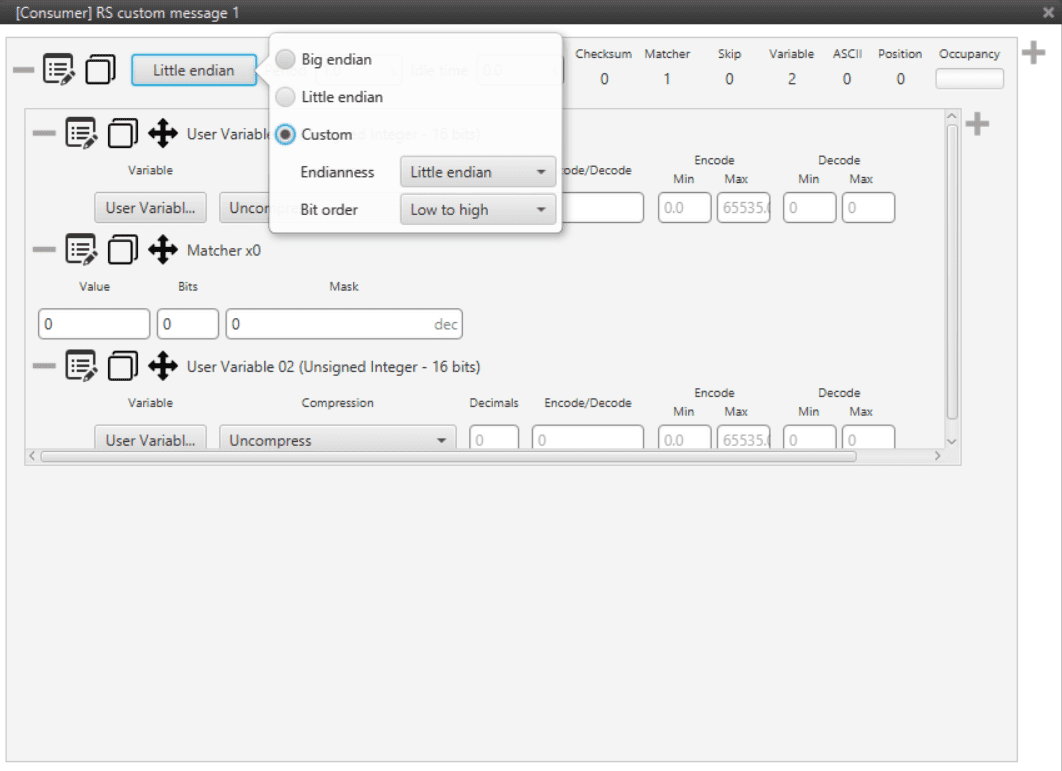Serial Custom Messages¶
It is possible to configure the messages sent/received through the serial port and its conversion to system variables by selecting the option Custom message and configuring the I/O port.

XPC Unit8 Panel – Custom Message
In the image above can be seen two possible configurations using a Custom Message. The first one is configured to receive a determined message from a RS-232 serial port and the second is used to send a Custom Message throgh a RS-485 serial port. It is possible to use the same Custom Message for both tasks if Bind Bidirectional is used (the arrow indicates this). Custom Message configuration is covered in section Custom Messages.
The options available when configuring a custom message are:
Period: this option has a dual role depending on if it is used to transmit or receive data.
For transmitting, it is the inverse of the send frequency.
For receiving, it is the time Veronte wait for the message.
Endianness: depending on the order in which the device issue the message, it is possible to select:
Big endian: set the value from left to right
Little endian: set the value from right to left
Mixed endian: Any devices have this format. If you need to configure, please contact us.
The following type of messages are available to configure a structure: Variable, Checksum, Matcher and Skip.
Before configuring any message, user has to know the structure it has to have according to the device that is connected to the port. Each device may have a different message structure when it sends or receives information.
Message received¶
In this section is shown a possible structure when receiving a message.

Custom Messages Configuration Menu
Select the desired I/O port and then select Custom Message.
Configure the custom message. Press the configuration button and another window will be displayed. In this window press “+” to add a message (system variables or ADSB Vehicle), when it is already added, select an Endianness and set a value for Period.
Create the message structure by adding fields to it. In this example, the structure of the message received consists of a Matcher (to identify the message)and two User Variable (where the information is storaged).
Check the number of bits of each element. User has to know previouly the structure of the message received and its size, each element has to configured according to that.
